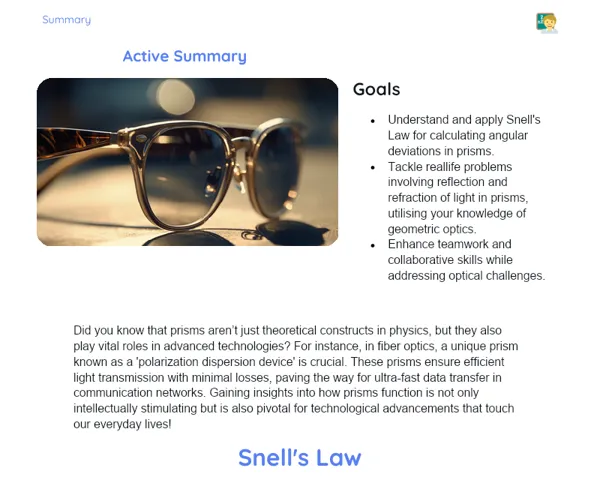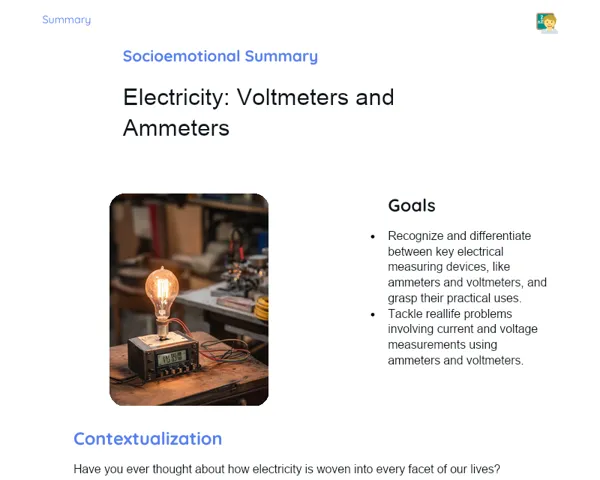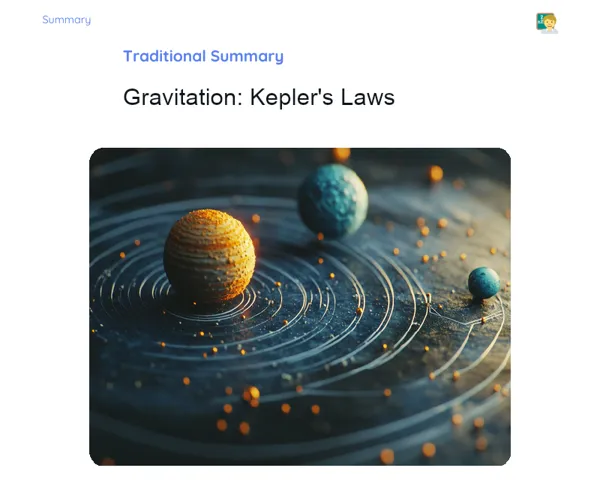Summary Tradisional | Geometric Optics: Penumbra and Shadow
Contextualization
Geometric optics is a fascinating branch of physics that delves into how light travels in straight lines and the principles that govern luminous phenomena. The concepts of shadow and penumbra are essential for comprehending how light interacts with opaque objects, leading to regions of complete and partial darkness. When an opaque object blocks the light emitted from a source, a shadow is cast in the area where light cannot penetrate, resulting in a completely dark zone. Conversely, around this shadow, the penumbra appears, which is an area with partial illumination where only some of the light is obstructed.
These principles are not just theory; they manifest in our everyday lives and natural occurrences, like eclipses. Take for instance a solar eclipse, when the Moon obscures the Sun's light, creating a shadow (umbra) on Earth. The regions surrounding this shadow, where sunlight is only partially obstructed, form the penumbra. Grasping these shadowy and penumbral areas is vital not only for astronomers but also for photographers, lighting designers, and even ensuring the safety of satellites orbiting our planet.
To Remember!
Definition of Shadow
A shadow is the dark area that appears when light is entirely blocked by an opaque object. When a light source hits an object, light doesn't pass through, leading to the formation of a region devoid of illumination. This dark area is the shadow, marked by a complete lack of light. The shadow's edges are often sharply defined if the source of light is point-like, meaning it originates from a single point.
The shadow's size and shape depend on the relative positions of the light source, the object, and the surface onto which the shadow is cast. The closer the light source is to the object, the larger the shadow projected will be. On the other hand, if the light is situated far away, the resultant shadow tends to be smaller and more clearly defined.
Shadows are visible in many common scenarios, like someone’s silhouette under the sun or the shadow created by a tall building. These examples offer a clear illustration of how light and objects in our surroundings interact, leading to distinct areas of darkness.
-
A shadow is a completely dark area.
-
It occurs when light is entirely blocked by an opaque object.
-
The shape and size of a shadow depend on the positions of the light source and the object.
Definition of Penumbra
The penumbra is the semi-lit region encircling the shadow, where only some of the light is obstructed. In simpler terms, it serves as a transitional space between light and shadow. The penumbra forms because the light source is not point-like; rather, it is extended, meaning it has a certain size and disperses light in multiple directions.
When light from an extended source hits an opaque object, one part of the light is blocked, creating the shadow, while another part passes around the object, resulting in the penumbra. The penumbra is characterized by partial lighting and a gradual change in light intensity, which lessens as it nears the shadow.
A perfect illustration of the penumbra can be seen during a partial solar eclipse, when the Moon blocks a fraction of the Sun's light, leading to a partially illuminated area surrounding the full shadow. Another everyday example is the penumbra formed by tree leaves, which allows some light to filter through, creating areas of partial brightness.
-
The penumbra is a partially illuminated area.
-
It surrounds the shadow, where light is partially obstructed.
-
It is characterized by a gradient of light intensity.
Formation of Shadow and Penumbra
The formation of shadows and penumbras is influenced by how light interacts with opaque objects of varying sizes and shapes. When an object is illuminated by a light source, it blocks some light and creates a shadow, while the light that bypasses the object forms the penumbra. The difference between shadow and penumbra becomes more prominent when considering point versus extended light sources.
A point light source, such as a torch, produces defined and sharp shadows since the light emanates from a single point. In contrast, sunlight, an extended light source, generates shadows with softer edges and a penumbral region around it. The positions of the light source, the object, and the surface onto which the shadow is projected also play crucial roles in determining the shapes and sizes of the shadows and penumbras created.
To reinforce these concepts, students can refer to diagrams illustrating the interaction of light with objects, showcasing areas of shadow and penumbra. Practicing drawing these regions under different scenarios will aid in solidifying their understanding of light behavior when it encounters obstacles.
-
Shadow and penumbra formation depends on light's interaction with opaque objects.
-
Point light sources create sharp shadows, while extended sources produce penumbras.
-
The relative positions of the light source and the object affect shadow and penumbra dimensions.
Practical Applications
The concepts of shadows and penumbras hold significant practical relevance in various fields, such as astronomy, photography, lighting design, and ensuring satellite safety. In astronomy, a solid grasp of shadows and penumbras is essential for understanding phenomena like solar and lunar eclipses. For instance, during a solar eclipse, the Moon blocks the Sun’s rays, resulting in a shadow (umbra) and a penumbra that contributes to either a total or partial eclipse, depending on the observer's vantage point.
In the realm of photography, managing shadows and penumbras is vital for creating compelling compositions and lighting setups. Great photographs often hinge on the careful manipulation of light to generate shadows and penumbras, thus adding depth and richness to the image. Similarly, in lighting design, understanding light's interaction with objects is key in crafting environments that fulfill aesthetic or functional needs.
Moreover, in satellite management, both penumbra and shadow considerations are crucial to prevent damage caused by overexposure to sunlight or inadequate power during prolonged shadow periods. Engineers meticulously calculate satellite trajectories, ensuring optimal performance and safety, especially during shifts in penumbra and shadow throughout their orbits.
-
Shadows and penumbras are crucial in astronomy for eclipse explanations.
-
In photography, these concepts are key for crafting high-quality images.
-
In lighting design, they enable the creation of visually appealing and functional spaces.
Key Terms
-
Geometric Optics: Study of light propagation in straight lines and the laws governing luminous phenomena.
-
Shadow: Dark area formed when light is completely blocked by an opaque object.
-
Penumbra: Partially illuminated region surrounding the shadow, where some light is blocked.
-
Point Light Source: A light source that emits light from a single point, creating well-defined shadows.
-
Extended Light Source: A source that emits light from multiple directions, producing shadows with softer edges and a penumbra.
-
Solar Eclipse: An event where the Moon obscures the Sun's light, resulting in a shadow (umbra) and a penumbra.
-
Lunar Eclipse: An event where the Earth blocks the Sun's light, casting a shadow on the Moon.
Important Conclusions
In today’s lesson, we explored the foundational concepts of shadow and penumbra within Geometric Optics. We learned that a shadow represents the entirely dark area formed when light is completely obstructed by an opaque object, while the penumbra refers to the partially lit area surrounding this shadow where only some light is blocked. We employed practical examples, such as solar eclipses, to vividly illustrate these concepts and better understand the interplay of light with opaque objects.
Furthermore, we discussed the significance of these definitions in practical applications across various fields like astronomy, photography, and lighting design. Understanding how shadows and penumbras form is crucial for explaining natural phenomena and applying this knowledge in projects focused on light management. Through examples and hands-on activities, we reinforced the ability to identify and differentiate between shadows and penumbras on drawings and diagrams.
The importance of this knowledge stretches beyond classroom walls, applying to numerous everyday and professional situations. I encourage everyone to delve deeper into this topic, as a comprehensive understanding of light behavior when it encounters obstacles can pave the way for innovative discoveries and applications across diverse fields of study and technology.
Study Tips
-
Revisit the diagrams and examples discussed in class, and try to draw shadows and penumbras in various contexts.
-
Research solar and lunar eclipses, watching videos and viewing images that illustrate the formation of shadows and penumbras during these events.
-
Practice spotting shadows and penumbras in your day-to-day life by taking photos of different objects under torchlight or sunlight, and analyze the shadow and penumbra areas.



